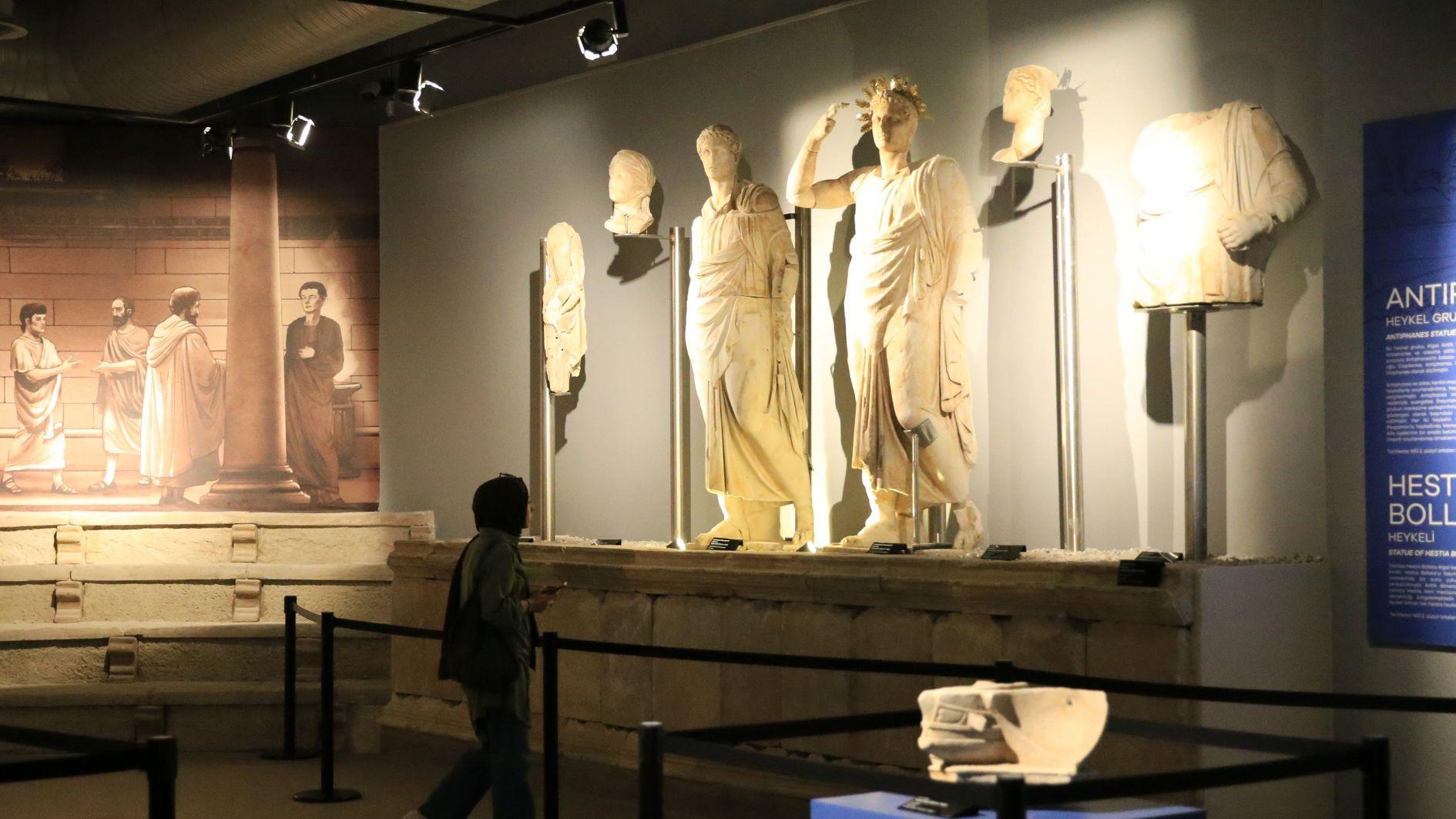
The Manisa Museum has reopened in a new location after it was closed at its former site in 2000, offering visitors a profound glimpse into the region's historical legacy with its rich collection of artifacts and exhibits that span thousands of years.
Originally opened 90 years ago next to the Muradiye Complex, the museum closed its doors in 2000 because of restoration work at the complex. Its new building, constructed in the Yunusemre district, was inaugurated last week during the opening ceremony of the Türkiye Cultural Road Festival.
Enriched over the years by new finds from archaeological excavations, the museum now features traces of various civilizations.
Among the oldest artifacts is a piece of volcanic tuff from the Paleolithic era, discovered near the Çakallar Volcano in Salihli, bearing a human footprint estimated to be 12,000 years old.
The museum also exhibits legendary Lydian eagle reliefs, a 2.6-meter-high statue of the goddess Hestia unearthed in the ancient city of Aigai, believed to be the largest known representation of the goddess, and 1,700 items from the Ottoman era reflecting the everyday lives of Ottoman princes.
Manisa Provincial Director of Culture and Tourism İbrahim Sudak told the state-run Anadolu Agency that they were pleased to reopen the museum after a long and challenging process.
Sudak noted that the museum’s journey began with artifacts unearthed in the ancient city of Sardes and that over the years, discoveries from various locations have significantly enriched the collection.
Highlighting the museum’s historical scope, he said, “Our museum hosts a wide range of artifacts, from a footprint dated back to 10,000 B.C. to objects from civilizations around 2,000 years ago. The most recent additions reflect Ottoman-era traditions in clothing and cuisine. Visitors can also see Hellenistic sculptures, the Şehzade Divanı [Prince's Council], as well as mosaics from the Lydian and Roman periods. It truly covers a vast span of time.”
Sudak added that after 25 years, the museum is attracting not only local residents but also visitors from neighboring provinces such as İzmir, Balıkesir and Uşak.
Sudak said that visitors spend time in the section featuring the Lydian eagle reliefs and mosaics, along with the 2.6-meter-tall statue of the goddess Hestia found during excavations at the city council center of Aigai.
“All of the works here are highly valuable, but the Lydian eagles in particular have inspired many stories and legends throughout history, and even influenced various countries,” he said. “While visitors can see these eagles at the Manisa Museum, they also have the rare opportunity to view the largest known statue of Hestia from the Hellenistic period — right here in Manisa.”